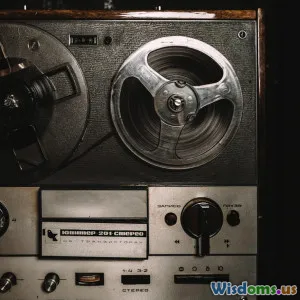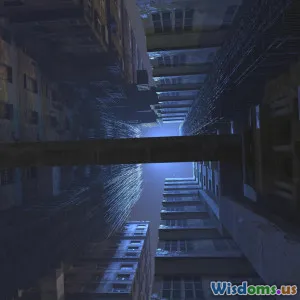
The Craft of Cult Classic Soundtracks Explained
10 min read Explore the art behind cult classic soundtracks and their lasting impact on film and culture. (0 Reviews)
The Craft of Cult Classic Soundtracks Explained
Introduction: Why Soundtracks Matter in Cult Classics
Imagine a film without its iconic music—"Blade Runner"’s eerie synth textures, the haunting minimalism in "Halloween," or the funky pop pulse of Tarantino's movies. Cult classic soundtracks do more than just fill silence; they elevate films into cultural phenomena. These soundtracks become inseparable from the movie’s identity, weaving texture and emotion into every scene, igniting nostalgia, and making fans come back time and again.
But what exactly goes into creating a soundtrack that achieves cult status? It's not merely about picking catchy songs or composing memorable melodies. It’s a complex craft, involving the interplay of narrative, cultural context, musical composition, and emotional resonance. This article uncovers the elements that define the art of cult classic soundtracks, analyzing the components, creative processes, and real-world examples that make these soundtracks resonate through generations.
Understanding Cult Classic Soundtracks: Definition and Characteristics
The phrase “cult classic” refers to films that, regardless of initial commercial success, win ardent followers over time. A "cult classic soundtrack" shares that cult admiration precisely because it complements and enhances the film’s unique identity.
Characteristics of Cult Classic Soundtracks
-
Emotional Signature: These soundtracks create a distinct emotional atmosphere, from unsettling dread in horror films to rebellious energy in 1980s teen dramas.
-
Memorable Themes or Motifs: Repeated musical ideas stick in the audience’s psyche. Think of John Carpenter’s four-note piano theme in "Halloween," which instantly conjures suspense.
-
Cultural Resonance: Many cult soundtracks amass fans by tapping into or even shaping subcultures—punk rock, synthwave, new wave, or psychedelic genres often define periods or communities.
-
Eclecticism and Risk-Taking: Cult soundtracks frequently blend unconventional or lesser-known music, pioneering sounds that mainstream films might avoid.
-
Timelessness and Nostalgia: Despite evolving musical trends, these soundtracks maintain evergreen appeal, partly driven by nostalgia but fundamentally due to high artistic quality.
Why Cult Soundtracks Matter
A strong soundtrack creates a sensory memory bridge, making the film immersive and memorable. It can make a low-budget film feel epic or add ironic commentary via song choice. Quentin Tarantino’s knack for digging up forgotten tracks (e.g., "Misirlou" in "Pulp Fiction") revitalizes both the film and the songs.
The Building Blocks: Crafting a Cult Classic Soundtrack
Crafting a soundtrack is a multilayered process that often happens through careful collaboration between directors, composers, music supervisors, and editors.
1. Understanding the Movie’s Essence
Soundtracks must capture the movie’s tone and spirit. For David Lynch’s "Twin Peaks," Angelo Badalamenti’s haunting score reinforces the show’s eerie mystery, while the dream-pop tracks underscore the surreal cultural milieu.
Example: Badalamenti’s use of sparse piano and textured strings created a sonic atmosphere supporting Lynch’s vision of uncanny Americana.
2. Musical Composition and Innovation
Original scores for cult classics often break conventional scoring rules. John Carpenter composed the iconic "Halloween" theme on a single synthesizer, using minimal resources to produce a chilling and memorable score.
Innovations include state-of-the-art synths (e.g., Vangelis’ Blade Runner soundtrack), analog techniques, or blending electronic and orchestral elements.
3. Song Selection and Licensing
The soundtrack’s identity can hinge upon curated songs—usually guided by the music supervisor. In "Guardians of the Galaxy," the use of ’70s pop and rock revived both the soundtrack’s vital role and interest in decades-old hits.
This balancing act involves:
- Matching songs to scenes for emotional or narrative impact.
- Navigating licensing complexities and budget limitations.
4. Using Music as Narrative Device
Cult films often elevate music beyond ambience; songs and scores narrate subtext or contrast scenes to create irony or emotional depth.
Example: In "Donnie Darko," the melancholic indie tracks underline teenage alienation and surreal angst.
5. Technical Excellence in Sound Design
Beyond composition and song selection, mixing and mastering ensure the soundtrack resonates with cinematic visuals. Panning, dynamics, and timing calibrate music’s impact on the scene’s mood.
Case Studies: Legendary Cult Classic Soundtracks
John Carpenter’s "Halloween" (1978)
Composed by Carpenter himself, the minimalist four-note motif exemplifies restraint and genius. Its simplicity—just piano and synthesizer—builds an enduring tension. Carpenter's background in music and film directing allowed a seamless melding of vision and sound.
Impact:
- Inspired countless horror scores.
- Demonstrated how minimalism can trigger maximum suspense.
"Blade Runner" by Vangelis (1982)
A pioneering electronic score merging noir atmosphere and futuristic synth soundscapes that defined the movie’s dystopian Los Angeles.
Insights:
- Vangelis blended acoustic instruments with synths to create texture and mood.
- Remains influential in sci-fi and electronic music circles.
Quentin Tarantino’s "Pulp Fiction" (1994)
Distinct for its curated retro surf rock and soul songs, the soundtrack is a storytelling tool, evoking vibe and irony.
Real-world impact:
- Boosted revival of obscure vintage tracks.
- Sony Records reported the soundtrack as one of the best-selling ever for a movie.
"Drive" (2011) by Cliff Martinez
The dreamy synth soundtrack matches the neon-lit existential tension, blending retro sounds with modern minimalism.
Significance:
- Led to an increased mainstream interest in synthwave.
- The soundtrack charted on Billboard and was praised for mood cohesiveness.
The Role of Nostalgia and Cultural Ties
Often, cult classic soundtracks tap into nostalgic sentiments. Fans re-watch these films and re-listen to the music, reconstructing their personal and cultural memories.
Nostalgia as a Driving Force
The 80s is a golden era for cult soundtracks because it was a time of rapid musical and technological innovation—synthesizers, mixing techniques, and diverse genres blossomed simultaneously.
Studies show nostalgic music enhances emotional connectivity, reinforcing attachments to iconic films.
Community and Identity
Certain cult soundtracks shapeshift into anthems for subcultures. Punk rock soundtracks fueled rebellion and youth identity, while synthwave invokes futurism and retro aesthetics.
Practical Lessons for Aspiring Filmmakers and Composers
Align Soundtrack With Vision
Know the story’s soul and audience moods. Compose or select music that’s both contextually fitting and emotionally powerful.
Embrace Innovation
Don’t shy from unusual instruments or new genres. Cult classics often break molds, so experimentation can pay off.
Collaborate Effectively
A strong bond between director, composer, and music supervisor often produces better soundtracks that fortify the narrative.
Think Long-Term
Aim to create timelessness over trend-following. Cult soundtracks endure because they transcend immediate popularity.
Conclusion: Crafting Immortality Through Sound
The creation of cult classic soundtracks is a meticulous, artful process that intertwines sound with story, culture, emotion, and innovation. These soundtracks are not mere background but pivotal architects of the film’s identity, transforming scenes into legendary moments.
The craftsmen behind these soundtracks—composers, curators, directors—engage in a delicate dance, balancing musical ingenuity with narrative depth and emotional pull. For fans, the music triggers memories, belonging, and timeless joy.
Understanding this craft enriches how we appreciate films and their soundscapes. Whether you are a filmmaker, musician, or enthusiast, delving into the craft of cult classic soundtracks reveals how music can immortalize stories and generate enduring cultural impact.
So next time you watch a cult classic, listen closely. The soundtrack might be telling you more than the characters on screen.
References and further reading:
- "Audio-Vision: Sound on Screen" by Michel Chion
- "The Soundtrack Album: Listening to Media Sound" by Paul Theodore Higson
- Interviews with John Carpenter on the "Halloween" score process
- "Tarantino’s Soundtracks: The Art of Film Music Supervision" – Journal of Media Studies
- Billboard data on "Pulp Fiction" and "Drive" soundtrack sales
Rate the Post
User Reviews
Popular Posts


















